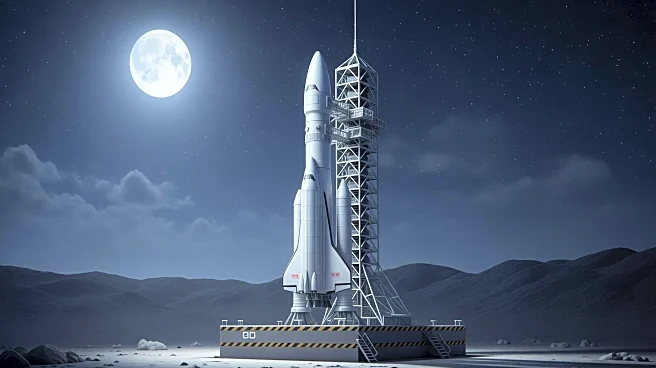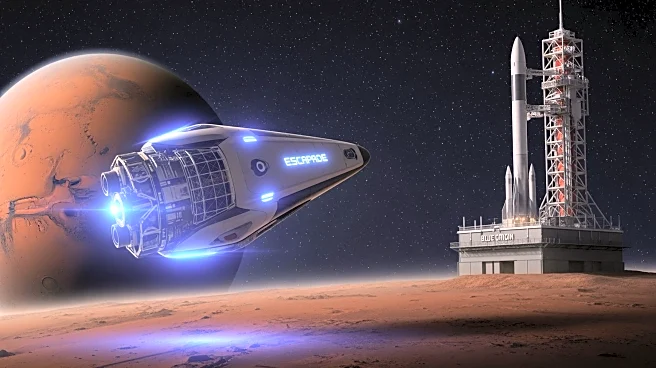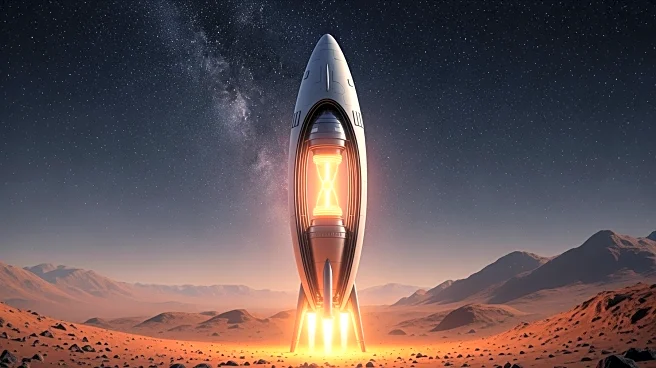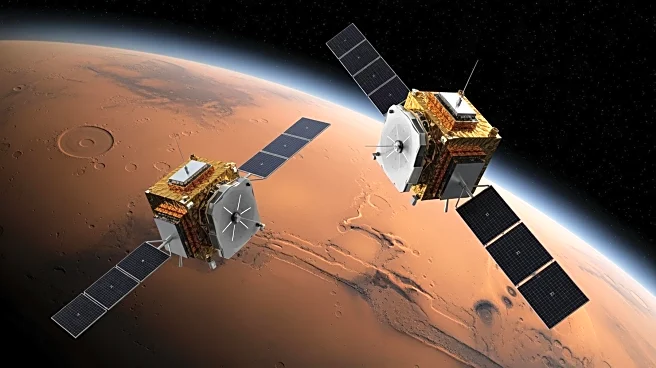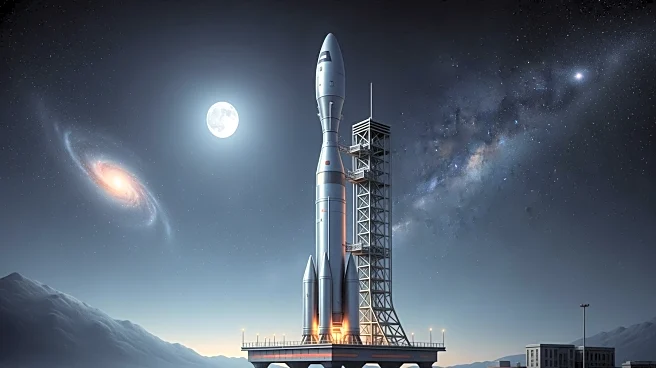What's Happening?
A new exosuit featuring artificial muscles has been tested during a space analog mission in Australia, aiming to improve astronaut mobility on the moon and Mars. Developed by Emanuele Pulvirenti, a research
associate at the University of Bristol, the suit is designed to be worn under a spacesuit, reducing resistance and fatigue during extravehicular activities. The exosuit incorporates nylon and thermoplastic layers for airtightness, with Kevlar used for strength in knee straps and waistbands. The testing took place at the CRATER facility, simulating lunar conditions, and involved global collaboration with scientists from 25 countries.
Why It's Important?
The development of the exosuit represents a significant advancement in space exploration technology, potentially enhancing astronaut performance and safety during missions on the moon and Mars. By reducing physical strain, the suit could enable longer and more efficient surface activities, contributing to the success of future lunar and Martian missions. The technology also holds promise for applications beyond space exploration, such as aiding individuals with mobility challenges or undergoing physical rehabilitation.
What's Next?
Further testing and refinement of the exosuit are expected, with potential trials on the International Space Station before its retirement. The technology could be adapted for everyday use, providing mobility assistance to people with disabilities. Researchers aim to develop a hybrid suit capable of switching between assistance and resistance modes, broadening its applicability in various fields. Continued collaboration among international scientists will likely drive innovation and improvements in wearable robotic systems.
Beyond the Headlines
The exosuit's development highlights the intersection of space technology and healthcare, offering insights into how advancements in one field can benefit another. Ethical considerations regarding accessibility and affordability of such technology for individuals with disabilities may arise, prompting discussions on equitable distribution and support. The project also underscores the importance of international collaboration in advancing scientific research and technological innovation.



